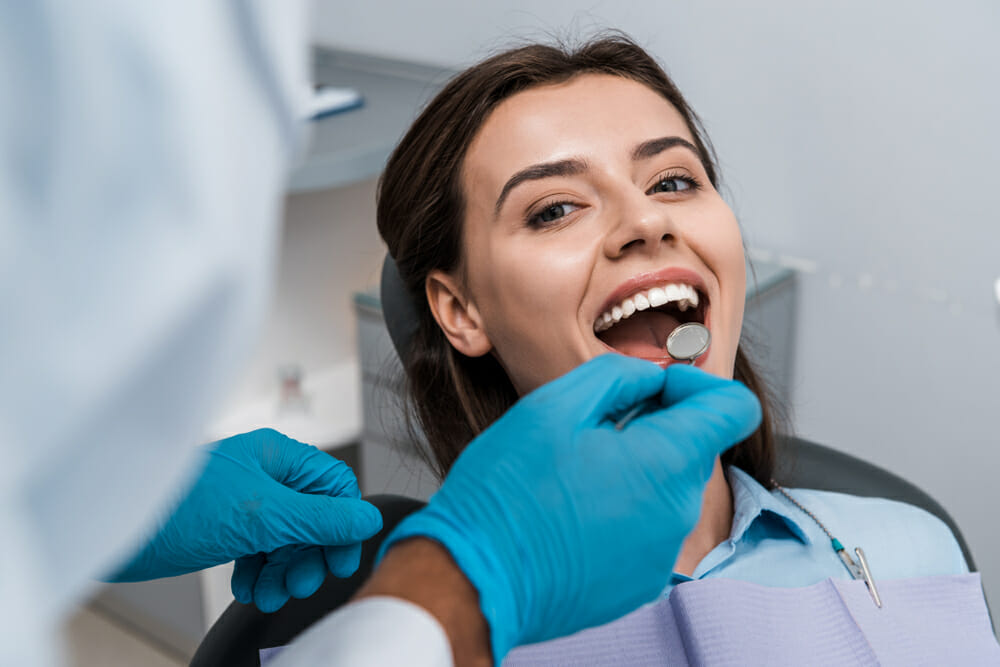The 3-Minute Rule for Legacy Orthodontics
The 3-Minute Rule for Legacy Orthodontics
Blog Article
The Only Guide to Legacy Orthodontics
Table of ContentsA Biased View of Legacy OrthodonticsTop Guidelines Of Legacy OrthodonticsThe Facts About Legacy Orthodontics RevealedSome Known Facts About Legacy Orthodontics.How Legacy Orthodontics can Save You Time, Stress, and Money.
In enhancement, we provide flexible therapy routines, adaptable repayment options and an enjoyable, satisfying experience.An orthodontist is a dental practitioner trained to diagnose, prevent, and treat teeth and jaw abnormalities. Orthodontists work with people of all ages, from kids to adults.
Malocclusion, or misaligned teeth, can result in dental issues, consisting of tooth degeneration, gum tissue condition, and challenging or painful eating. However not everybody is born with straight teeth. If you have a negative bite or large rooms between your teeth, you may wish to consult a dentist focusing on orthodontic care.
Getting The Legacy Orthodontics To Work
( Image Credit: DigitalVision/Getty Images) Orthodontists use taken care of and removable dental gadgets, like braces, retainers, and bands, to transform the setting of teeth in your mouth. Orthodontic therapy is for oral irregularities, including: Misaligned teethBite problems, like an overbite or an underbiteCrowded teeth or teeth that are also far apartJaw misalignmentThe goal of orthodontic treatment is to improve your bite.
A healthy and balanced bite ensures you can eat, eat, and speak correctly. While you could consider orthodontists as mainly for kids or teenagers that require dental braces, they can deal with oral issues at any type of age. Orthodontists participate in university, oral college, and orthodontic school. After graduation, they invest 2 or 3 years in an orthodontic residency program.
, but not all dental experts are orthodontists. They concentrate on 2 areas: Exactly how to properly and securely relocate teeth Exactly how to appropriately lead development in the teeth, jaw, and faceOnce an orthodontist has finished training, they have the option to become board accredited.
The Facts About Legacy Orthodontics Uncovered
Malocclusion leads to tooth overcrowding, an irregular jaw, or uneven bite patterns. Malocclusion is generally treated with: Your orthodontist connects metal, ceramic, or plastic square bonds to your teeth.
If you have only minor malocclusion, you may be able to use clear dental braces, called aligners, as opposed to typical dental braces (https://pagespeed.web.dev/analysis/https-www-legacyortho-com/fjbdpbv998?form_factor=mobile). Some people require a headwear to help move teeth into line with stress from outside my link the mouth. After braces or aligners, you'll require to put on a retainer. A retainer is a customized gadget that maintains your teeth in place.
They're most frequently used on youngsters. They can develop additional area in the mouth without having to draw teeth. If you have a severe underbite or overbite, you might need orthognathic surgical treatment (also called orthodontic surgical treatment) to extend or reduce your jaw. Orthodontists use cables, medical screws, or plates to support your jaw bone.
You might need to see an orthodontist if you have: Crowding or not sufficient room for all of your teethOverbite, when your top teeth come your base teethUnderbite, when your bottom teeth are as well much forwardSpacing or issues with gapsCrossbite, which is when your upper teeth fit behind your bottom teeth when your mouth is closedOpen bite or an upright space in between your front bottom and upper teethMisplaced midline, when the center of your bottom and top teeth do not align Correcting an oral malocclusion can: Make attacking, chewing, and talking easierImprove the balance of our face and your overall appearanceEase discomfort from temporomandibular joint disordersSeparate your teeth and make them easier to cleanse, assisting stop dental cavity or dental caries It's often a dental expert who first notices misaligned teeth during a routine exam.
The Facts About Legacy Orthodontics Uncovered

Throughout your initial orthodontic consultation, you'll likely have: A dental examPhotos taken of your face and smileDental X-raysPanoramic (360 level) X-rays of your face and headImpressions to develop mold and mildews of your teethThese tests will aid your orthodontist recognize exactly how to wage your therapy. braces. An orthodontist is a dentist that's had training to treat your teeth and jaw
An orthodontist is focused on your bite, so something like a chipped tooth would be dealt with by a dental practitioner. Orthodontists are focused on your bite, or the means your teeth fit together, and the straightness of your teeth.
Ever before wondered just how celebrities always seem to have perfectly lined up teeth? The answer typically lies in the proficient hands of an orthodontist. What precisely does an orthodontist do? Orthodontists are dental experts that concentrate on correcting irregularities in the teeth and jaws. Their proficiency surpasses simply developing a lovely smile; it reaches improving your total dental health and wellness and function.
Facts About Legacy Orthodontics Uncovered

, orthodontists have a varied toolkit at their disposal. These reliable braces make use of a system of braces bonded to the teeth and attached by cables.
Clear aligners, like Invisalign, are a preferred alternative for clients looking for a more very discreet treatment option. These removable trays are tailor-made to gradually move the teeth's setting. Headgear may be used together with dental braces or aligners to use extra targeted pressures, particularly for dealing with jaw disparities. In cases of slim jaws, palatal expanders can be used to create room for correct tooth alignment.
Report this page